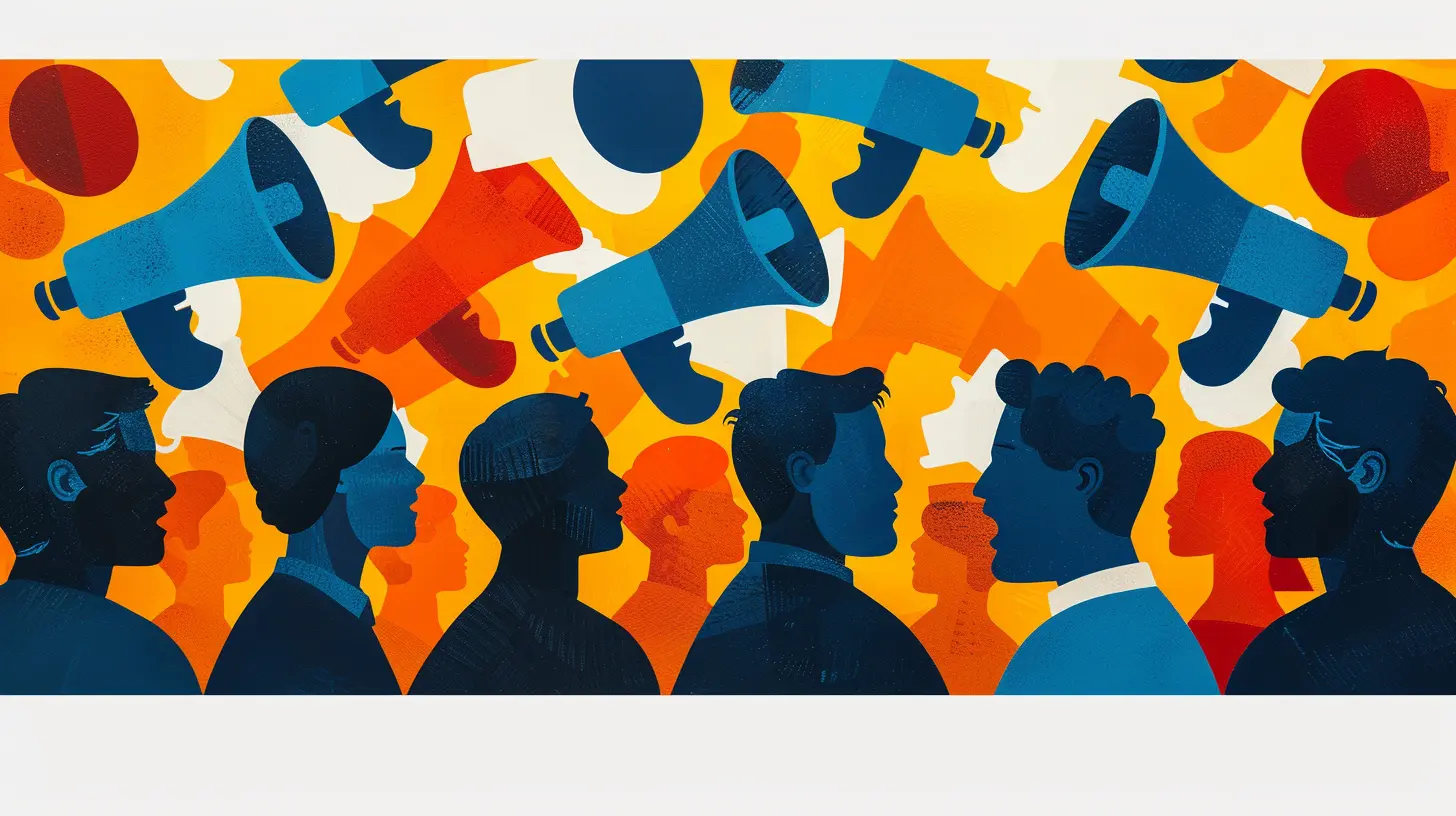The Role of Communication in Shaping Organizational Culture
30 May 2025
Let’s talk about something that doesn’t always get the spotlight but is pretty much the heartbeat of any organization—communication. Yep, that everyday tool we use to exchange ideas, vent frustrations, crack jokes, collaborate on projects, and sometimes, let’s be honest, miscommunicate our way into chaos. Communication isn’t just about getting work done; it’s the glue that holds your organizational culture together. Without it? Well, your workplace could feel like a bunch of strangers stuck in an elevator.
But before we dive deeper, let’s get the basics straight. What exactly is organizational culture? Think of it as the personality of a company—the vibes, the unwritten rules, the way people interact, and even that awkward pause during Zoom meetings. It’s the collective mood, behavior, and values of the organization. Now, who or what pulls those strings? That’s right, communication.
So, grab your coffee or tea, kick back, and let’s unpack the fascinating ways communication shapes organizational culture.
Why Is Communication the MVP of Organizational Culture?
Picture this: You walk into two different offices on the same day. In one, everyone’s laughing, debating ideas, and walking in and out of meetings like they own the place. In the other, there’s this weird silence, a couple of hushed whispers, and employees stuck in their cubicles like plants that haven’t been watered. What’s the difference? Communication. One workplace thrives because ideas and feedback flow freely, while the other feels like a ghost town because people are too cautious to speak up.Let me break it down for you:
- It Sets the Tone: Communication is the vehicle that carries the organization’s values and vision to every employee. Whether it’s a casual email from the boss, a motivational speech at the annual meeting, or just the way team members chat over lunch, every interaction contributes to the bigger picture of “how things are done around here.”
- It Builds Trust: Trust is like Wi-Fi—you don’t see it, but without it, nothing works. Transparent, open communication fosters trust among employees and between leadership and staff. If people feel out of the loop, they’re more likely to question decisions and feel disengaged.
- It Encourages Collaboration: You can’t build a culture of innovation or teamwork if people aren’t talking to each other. Communication bridges the gap between departments, teams, and even individual employees.
- It Reflects the Leadership Style: The way leaders communicate (or don’t) trickles down to every level of the organization. If leaders are approachable and open, the culture becomes more inclusive. If they’re distant or cryptic, people might adopt a "figure it out yourself" attitude.
Types of Communication That Shape Organizational Culture
Alright, not all communication is created equal. Just like there’s a difference between whispering in a library and screaming at a concert, different types of communication have different effects on workplace culture. Let’s break it down:1. Top-Down Communication
This is the "Because I Said So" of workplace communication. It flows from the leadership to employees and is often used to share critical information, company goals, or policy changes.- Impact on Culture: When done right, top-down communication provides clarity and direction. But if it’s too one-sided or authoritarian? Employees can feel like cogs in a machine. Nobody likes to be talked at; they want to be talked with.
2. Bottom-Up Communication
Now, this one flips the script. It’s where employees share feedback, concerns, or suggestions with management. Think of it as an open mic night for the team.- Impact on Culture: Encouraging bottom-up communication shows employees that their voices matter. This builds a culture of trust, engagement, and innovation. But if this type of feedback is ignored or swept under the rug? Say hello to frustration and disengagement.
3. Horizontal Communication
Ever heard of "watercooler conversations"? That’s horizontal communication in action—essentially, communication between peers or teams on the same level.- Impact on Culture: Healthy horizontal communication helps create camaraderie, strengthens teamwork, and reduces departmental silos. If it’s toxic (think gossip or blame games), the culture takes a hit.
4. Nonverbal Communication
You didn’t think we’d forget body language and tone, did you? Sometimes what’s not said speaks louder than words. A leader rolling their eyes during a meeting or a team member’s sarcastic tone can instantly sour the vibe.- Impact on Culture: Positive nonverbal cues—like nodding, smiling, or maintaining eye contact—show respect and encouragement. Negative cues? Not so much.
The Good, The Bad, and The Misunderstood: Common Communication Challenges
Let’s be real—communication isn’t all sunshine and rainbows. Sometimes, it’s more like a game of broken telephone. A tiny hiccup can spiral into a full-blown misunderstanding faster than you can say “Let me clarify.” Here are some common pitfalls:- Information Overload: Ever had an inbox so full you wanted to fake your own disappearance? Too much communication, especially poorly organized, can overwhelm employees and dilute important messages.
- Lack of Clarity: Vague instructions are the enemy of productivity. If you’re telling people to "increase effort" without specifying how or where, you’re basically setting them up for confusion.
- Silo Mentality: Teams or departments that refuse to share information might as well be islands. It creates a fragmented culture and stifles collaboration.
- Ignoring Feedback: Collecting feedback is great, but failing to act on it is like asking for restaurant recommendations and then eating at home. It frustrates employees and signals that their opinions don’t matter.
The Digital Age: How Technology Impacts Workplace Communication
Can we take a moment to appreciate how much emails, Slack, Zoom, and other tech tools have changed the way we communicate at work? It’s hard to imagine a world without them, but digital communication comes with its own set of pros and cons.- The Good: Instant communication, the ability to collaborate remotely, and record-keeping are lifesavers in today’s fast-paced work environment. Plus, emojis? Total game-changers for tone—because a simple “Sure” in text can feel like a death sentence without the right emoji. 😅
- The Bad: Misinterpretations happen when you can’t hear tone or see facial expressions. And don’t get us started on Zoom fatigue or the constant ping of notifications. It’s like working while juggling flaming torches.
- Impact on Culture: Organizations that leverage tech wisely create a more connected, flexible culture. Those that overdo it can leave employees feeling burned out or unsupported.
How to Foster a Positive Communication Culture
Okay, so how do you avoid the cringy pitfalls and build an environment where communication thrives? Here are some practical tips:1. Practice Radical Transparency
Nobody likes secrets, especially at work. Be upfront about changes, challenges, and goals. Even if the news isn’t great, employees appreciate honesty over sugarcoated half-truths.2. Encourage Open Feedback
Make feedback a two-way street, and actually act on it. Create safe spaces for employees to voice their thoughts, whether it’s through anonymous surveys or honest one-on-one chats.3. Train Leaders to Be Communicators
A leader who can’t communicate is like a chef who can’t cook. Invest in communication training for your leadership team—they set the tone for everyone else.4. Celebrate Achievements Publicly
A little acknowledgment goes a long way. Shout out to employees who go above and beyond. This not only boosts morale but shows the organization values recognition.5. Make Use of Multiple Channels
Not everyone processes information the same way. Mix it up with emails, meetings, videos, or even good ol’ bulletin boards. The more inclusive, the better.Wrapping It Up: Communication is the Backbone of Culture
Alright, so what’s the takeaway here? Communication isn’t just a tool; it’s the architect of your workplace culture. It’s what makes employees feel included, valued, and motivated—or, conversely, alienated and frustrated. By being mindful of how communication flows in your organization, you’re setting the stage for a thriving culture where everyone feels like they belong.So, the next time you’re sending an email, leading a meeting, or even chatting by the coffee machine, remember: Every word you say (or don’t say) has the power to shape your organization. Use it wisely, and your culture will thank you for it.
all images in this post were generated using AI tools
Category:
Corporate CultureAuthor:

Miley Velez
Discussion
rate this article
3 comments
Shania McTavish
Effective communication truly transforms and strengthens organizational culture profoundly.
June 12, 2025 at 10:37 AM

Miley Velez
Thank you for your insightful comment! I completely agree—effective communication is essential in shaping and enhancing organizational culture.
Selkie McGovern
Great insights on the importance of communication in shaping organizational culture! Clear and open communication not only fosters collaboration but also empowers employees, driving engagement and innovation. Let's prioritize these practices for a thriving workplace!
May 31, 2025 at 11:17 AM

Miley Velez
Thank you for your thoughtful comment! I completely agree—effective communication is essential for fostering a positive organizational culture and driving engagement. Let's continue to prioritize these practices!
Ivan McIntire
Effective communication is the backbone of a strong organizational culture. It fosters transparency, collaboration, and trust, enabling teams to thrive and align with the company’s values, ultimately driving success and innovation.
May 30, 2025 at 12:29 PM

Miley Velez
Absolutely! Effective communication indeed lays the foundation for a vibrant organizational culture, promoting essential values like transparency and collaboration that lead to overall success. Thank you for your insightful comment!



